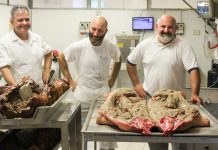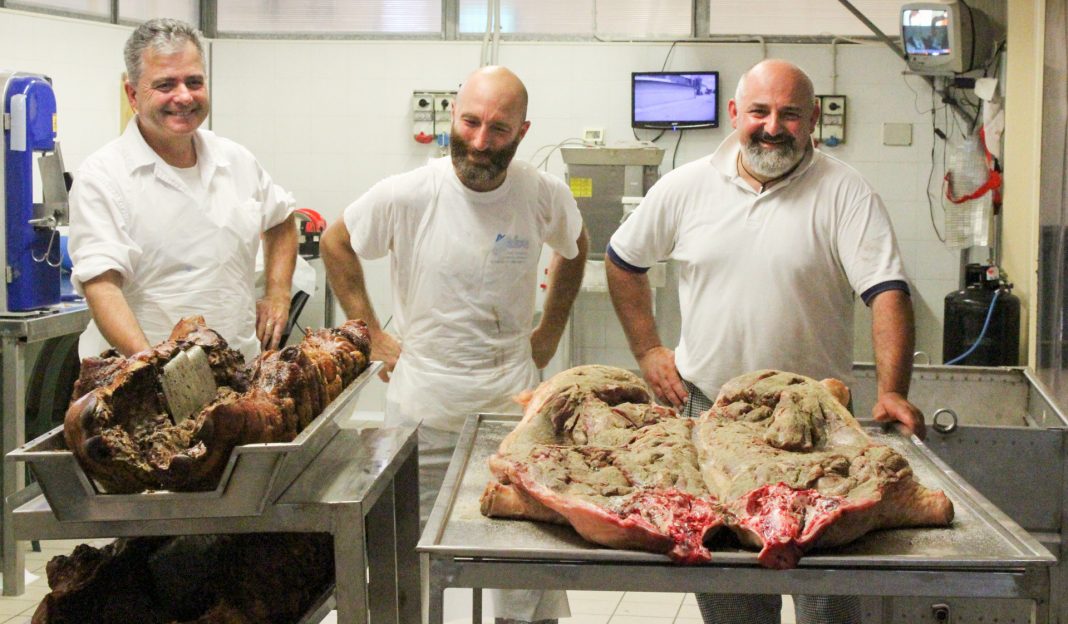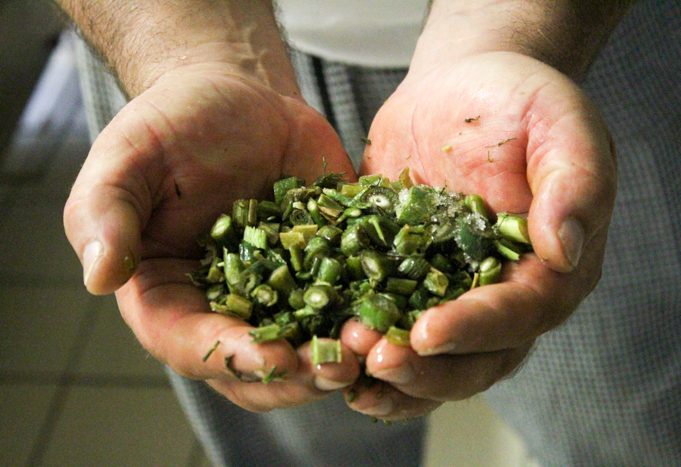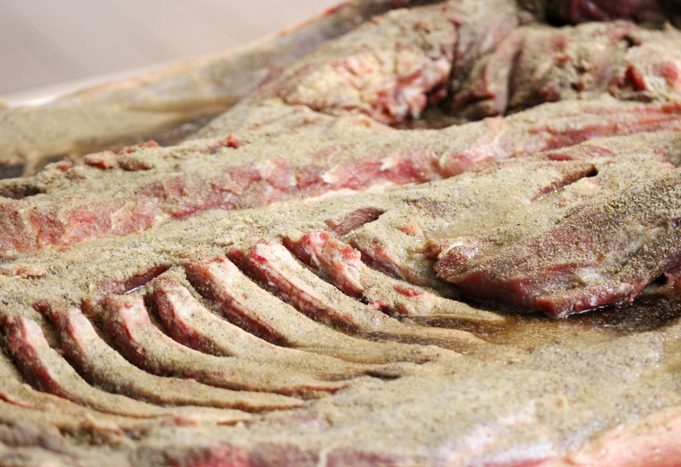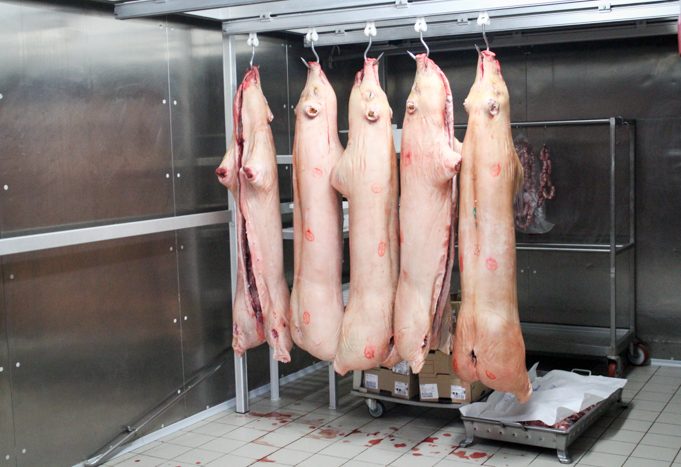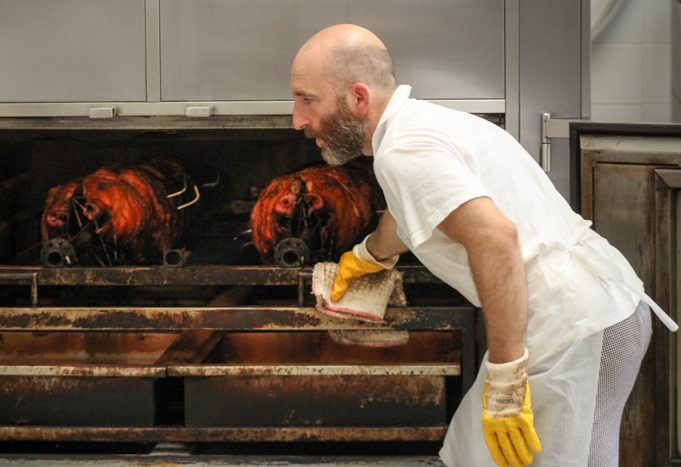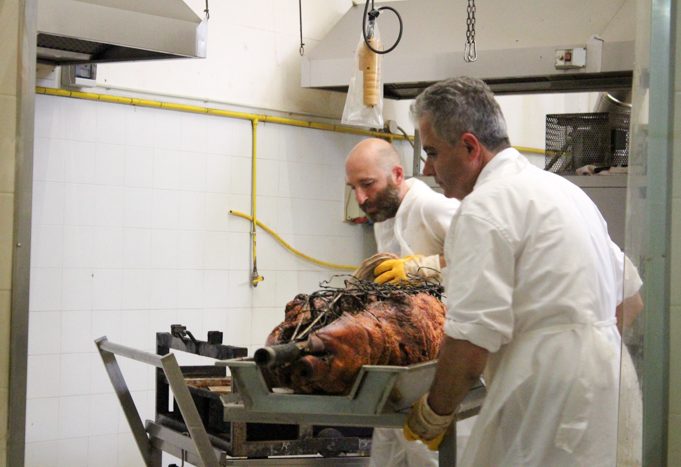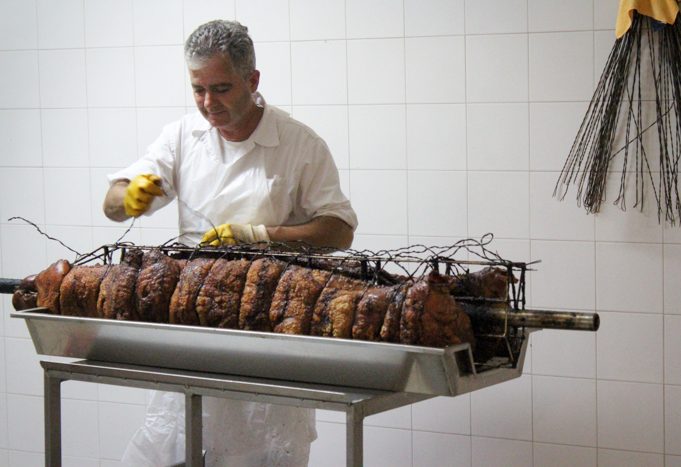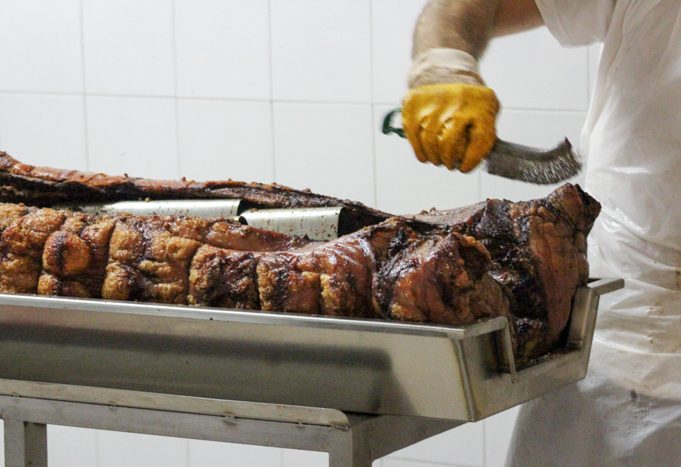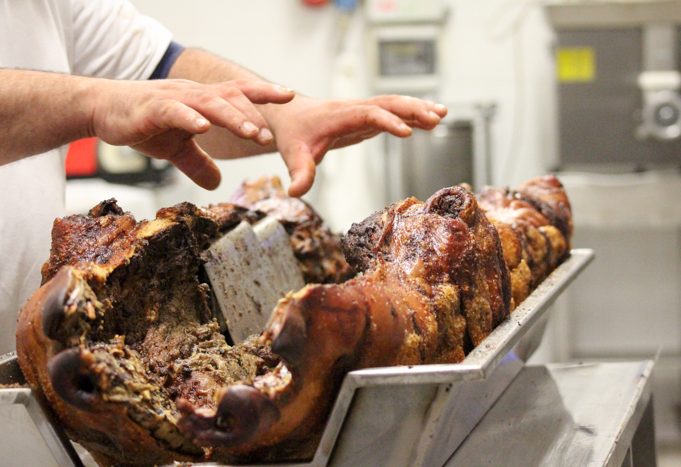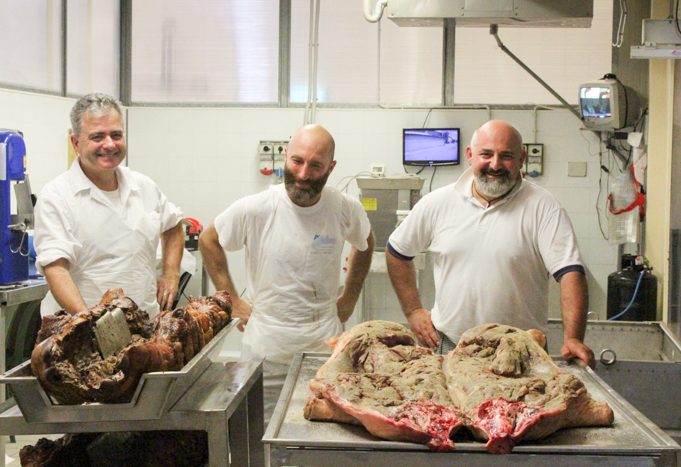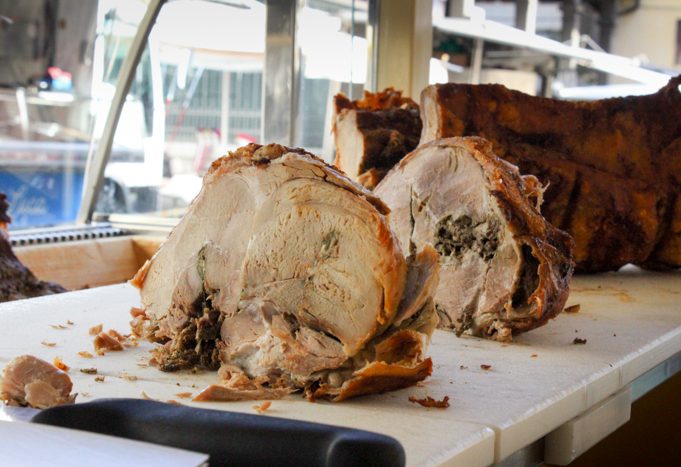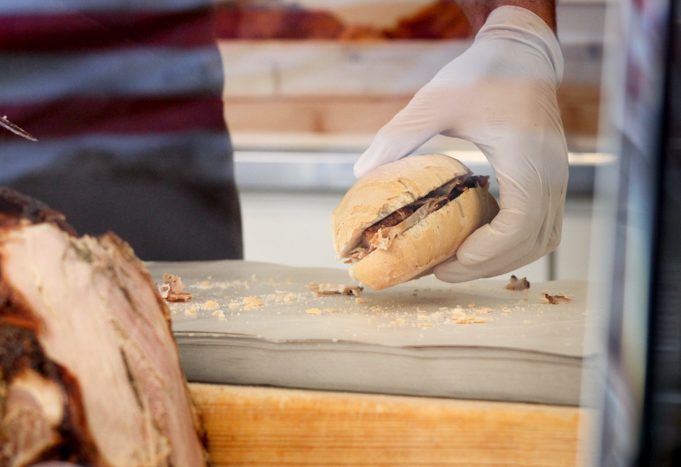The delicately crafted pig roast that draws devoted fans at weekly open-air markets
CAGLI, ITALY – The early morning sun shined down on this old Roman city in the central Italian province of Le Marche as patrons descended on the weekly market in the Piazza Papa Niccoló IV to buy the fresh produce, meats and cheese. As usual a line of customers waited patiently at the La Rovere truck.
But what were they waiting for?
It wasn’t pasta. Or pizza. Or bruschetta. Or cheese.
It was porchetta.

Few people outside of Italy have heard of porchetta (por-ket-ta). But tourists who stray from the traditional Rome-Florence-Venice triangle soon discover it is a cherished element of the culinary traditions in this central region.
Porchetta is a whole pig that has been deboned, flattened, seasoned, then rolled up and roasted to a golden, juicy brown.
“You can’t go wrong with a porchetta sandwich,” said Tiziano Tombari, a partner of La Rovere, as he sliced the tender meat and placed it onto flakey rolls at the Cagli market.
According to researchers at Eating Italy Tours, porchetta originated in Ariccia, a small city south of Rome. While it can now be found in many supermarkets, it remains best known as a star attraction at the weekly markets that roll into cities large and small across the country. Chefs that specialize in the dish attract long lines for the freshly baked porchetta on display in their trucks. Tiziano and Mattia Tombari of La Rovere are two of them.
Their company La Rovere was born in 2001 when their father decided he was tired of the daily routine in his butcher shop. With their background in the meat industry, it seemed practical to look in that direction, they recalled. So they opened the business specializing in salami and – most importantly – porchetta.
This is a dish that can’t be rushed. It takes about three days to prepare a porchetta.

Simone Romani, in charge of production, starts the process by delicately skinning and slicing the pigs, purchased from local farmers, down the middle. The pig is opened and flattened so it can be seasoned with salt and the “finest whole pepper from India,” he explained.
After 24 hours, small cuts are made to the inside of the meat and packed with garlic and wild fennel, then left to marinate for another 24 hours.
Baking takes seven hours at an exact formula: 480 degrees the first 60 minutes, 320 degrees for the next six hours until golden brown.
Finally, the meat is removed from the oven and scraped of excess salt and scorched skin before being placed in a cold fridge.

La Rovere sticks to traditional porchetta recipes and techniques and can typically produce around 55 to 66 pounds of porchetta from a 220-pound pig by using an oven rather than a steaming method, preferred by some mass producers, they said.
“It is better to eat steak once a month than every day because you have to understand the quality of it,” Romani explains. “Our company prefers quality over quantity.”
In a competitive market, porchetta is sold for about 13 dollars per pound. Massimo Muratori, a partner at La Rovere, said it is best eaten within three days after being cooked while the flavors mixed are still rich and fresh.
When people tell you your product is good, you want to keep it good.
For 20 days each month the Tombari brothers pilot the two La Rovere trucks into markets across the central provinces, selling their porchetta.
Most customers who come to the La Rovere porchetta truck have been returning for years to enjoy more of this traditional Italian cuisine. “When people tell you your product is good, you want to keep it good,” Muratori explained.
Giovanni Garbuli, owner of Sugar Café and long-time resident of Urbino Italy, loves to eat the traditional Italian dish.
“Your mouth is full of flavor from the very beginning to the very end,” Garbuli said. “You can’t eat porchetta every single day, but when you eat porchetta you really like it, you enjoy it.”









